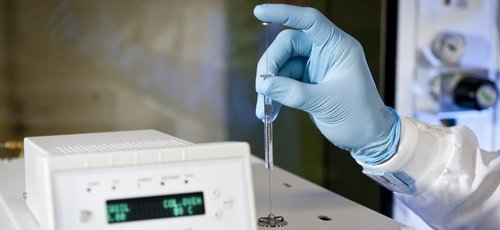OCTREO - Production of diagnostic kits Edda Hynic-Toc
RESEARCH PROJECT COMPLETED.
Project Coordinator: Cristina Maria Moriguchi Jeckel, PhD
Summary of the work: the majority of human neuroendocrine tumors express high density of somatostatin receptors. Through the injection of a somatostatin analog, octreotide, marked with a radionuclide, it has been possible to develop a method to locate these tumors and their metastases by scintigraphy. The project will produce radiopharmaceutical kits with octreotide (EDDA HYNIC-TOC) to be marked with the metastable technetium 99 radionuclide (99mTc) and used in SPECT (Single Positron Emission Computer Tomography).
Technetium has a physical half-life of 6 hours, energy of 140 keV and lower product cost (~ R $ 800/2 doses). A great benefit for the patient is the acquisition of images. Because of the technetium's physical half-life, acquisition can be accomplished in just one day (between one and four hours), with the radiopharmaceutical being excreted quickly. The range (camera, equipment used for scintigraphy), has an ideal energy range of 100 to 200 keV, justifying an image with higher quality using technetium. The proposed drug aims to enable a better marker of neuroendocrine tumor, used in a gamma chamber, marked with 99mTc.
Research areas involved: pharmaceutical biotechnology, radiopharmaceuticals.
Funding entity: FINEP.
Check out the articles with the research theme:



